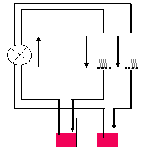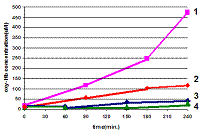

Background: The release of hemoglobin (Hb) from lysed red blood cells (RBC) in the blood stream under normal or pathological situations, followed by its auto-oxidation to MetHb, leads to oxidative damage to the vasculature, a process which may ultimately cause atherosclerosis (AS). Hemopexin (Hx) and haptoglobin (Hp) are two plasma proteins that normally act against such effects by removing the hazardous hemin (oxidized heme) from the circulation to the liver, especially under condition of increased hemolysis as is the case with blood of patients undergoing hemodialysis (HD) treatment.
Goal: This project aimed at the development of Hx- containing model prototype device that is capable of selectively capture acellular hemin from the blood and render protection to RBC against hemolysis to enable potential implementation of such devices in commercial HD units in order to reduce atherosclerosis risks.
Methodology: Immobilized Hx preparations was made by coupling Hx onto highly reactive, matrices, Eupergit C and Agarose. Several chemistries were applied including direct binding of amino groups, coupling of cysteine residues to Cys-modified matrix and coupling Hx-carbohydrate moieties to a hydrazide modified matrix. A model system using peristaltic pump driven blood circulation ex-vivo was developed to test Hx effects on RBC stability (Fig. 1).
Results: Using the ex-vivo Model device we were able to demonstrate a protective effect of Hx on the stability of RBC. Best results for Hx immobilization were obtained when Hx was coupled to Eupergit C via its carbohydrate groups. In contrast, all our efforts to couple Hx to polysulfone membranes or hollow fibers failed, eliminating the possibility to prepare a cartridge to be installed directly into the HD machine pipeline. However, we were able to demonstrate the protective effect on RBC against heme damages of Hx, both soluble and beads-immobilized using the ex-vivo device we developed (Fig. 2).
 | Fig. 1. A ex-vivo model system to simulate HD device using immobilized Hx. Fig. 2. Protective effect of Hx on RBC. 1- no Hx. 2-4 increasing concentrations of Hx. |  |
